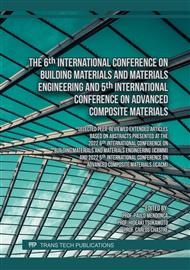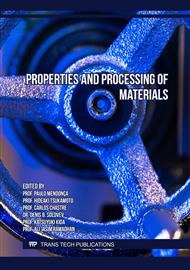p.111
p.117
p.125
p.131
p.139
p.145
p.151
p.157
p.165
Effect of Initial Water Sprinkling Curing on Strength Development of Precast Concrete
Abstract:
In general, steam curing is applied to improve the productivity of precast concrete products. After steam curing, products are stored outdoors for secondary curing before shipment. However, drying shrinkage and microcrack expansion that occurs during steam curing may impede strength enhancement. On the other hand, water curing is also clearly effective as a secondary curing process. However, installing a water curing pool in a precast concrete plant is not easy due to limited space. Therefore, this study focused on water sprinkling curing, which is relatively easy to perform without such restrictions. In this study, the effects of water sprinkling curing on the physical properties of mortar at the initial age of steam curing were investigated from the aspects of materials, mix proportions, curing conditions, and test piece dimensions. The results showed that water sprinkling curing increased the compressive strength by about 10% compared to curing under air. The effect of water sprinkling curing increased as the specific surface area of the test piece increased.
Info:
Periodical:
Pages:
157-164
Citation:
Online since:
April 2023
Authors:
Keywords:
Price:
Сopyright:
© 2023 Trans Tech Publications Ltd. All Rights Reserved
Share:
Citation:



